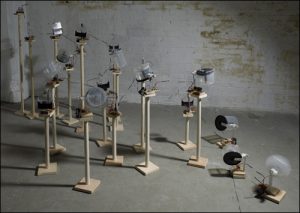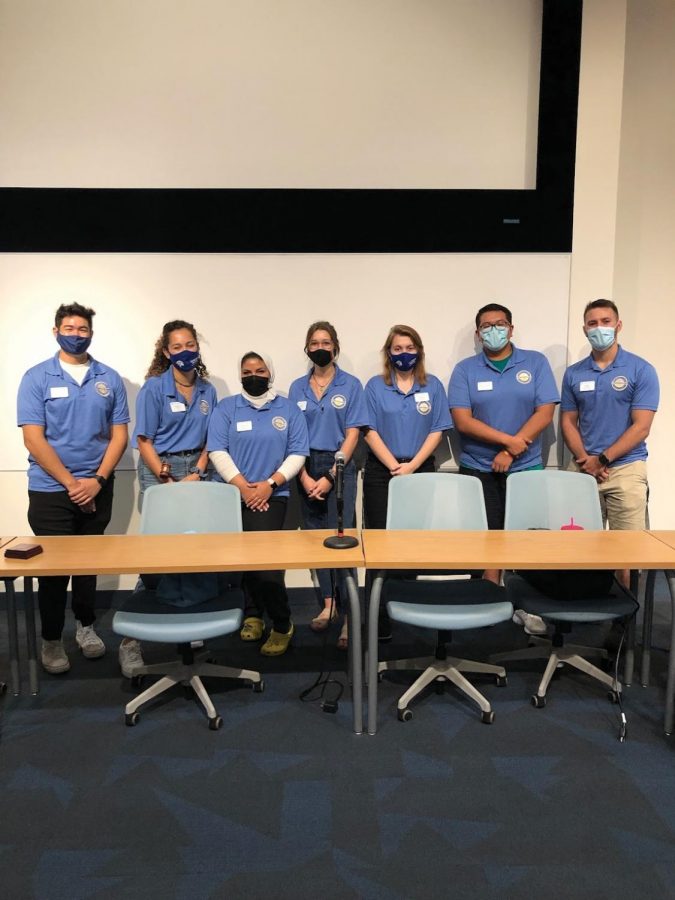Artists are always finding new and different ways to approach art and cross over the boundaries separating different mediums, methods, and

styles of artwork. Whether creating artwork out of musical notations or common household items like box tops and pennies, artists continue to expand the world of art by not only thinking outside of the box, but making us question whether or not such a box even exists. For its current exhibit, the Seton Art Gallery in Dodds Hall decided to explore another art linking sound and motion.
The Exhibit, “Emergence Delirium,” opened on Thursday January 19, with a reception from 4:00 p.m.-6:00 p.m. This exhibit, by composer and performer Bill Sack featuring Assistant Professor of Music and Sound Recording Chris Reba, includes devices and constructions that integrate motion and sound. Sack’s interests include mechanical models of music-making, automated composition, self-organizing systems, and non-idiomatic free improvisation. One of his pieces, titled “Apresbonanza,” consists of a series of cassette and CD containers that open and close at various points, creating sounds that vary based on the timing.
Another piece by Sack involved a guitar with several clips attached to the strings, and the clips themselves attached to little capacitors. Solar energy filled the capacitors which, after filling, push the clips across the guitar strings, resulting in notes being played. Reba’s contribution to the exhibit was a device linked to a computer and camera that took the image in front of it, converted it to binary code, and moved a set of dials accordingly, which created sounds in a variety of volumes.
An artist’s talk is scheduled for the conclusion of the exhibit on February 10. The Seton Art Gallery is open Tuesday, Wednesday, and Thursday from 11:00 a.m.-4:00 p.m. as well as Friday and Saturday from 11:00 a.m.-2:00 p.m., until the 10th. If you ever wanted to see what you look like in binary code, make sure you do so before Emergence Delirium closes!










